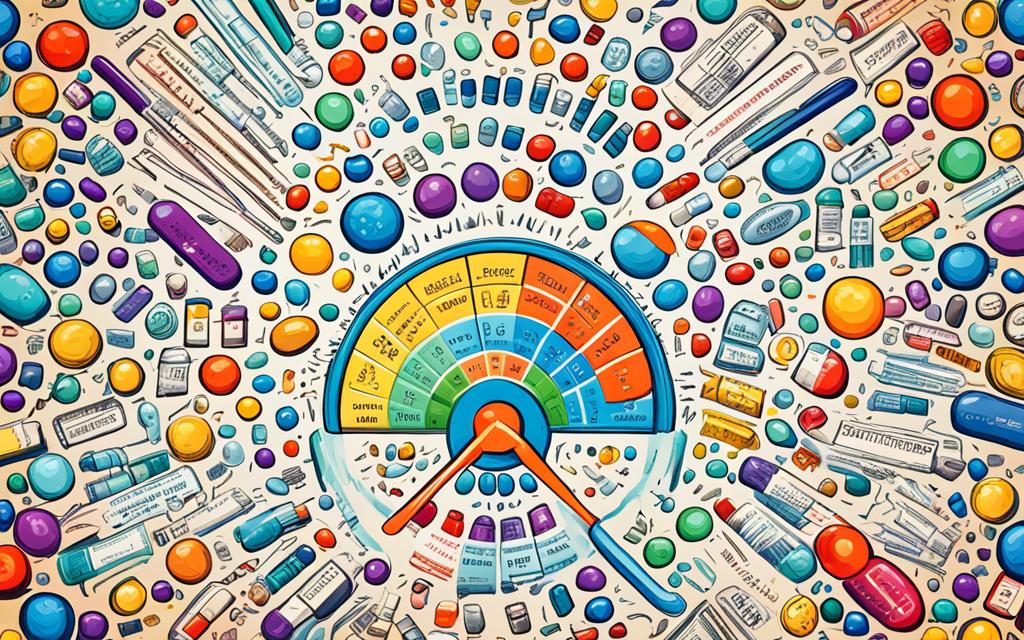What Are the Therapeutic Approaches for Autism?
Autism spectrum disorder (ASD) is a condition that affects how people interact, communicate, and behave. It varies in intensity from person to person. There isn’t a universal treatment, but there are many therapies that can make life better.
These therapies can help with speech functions in talented and advanced individuals.
There are many types of therapies available. These include applied behavior analysis and occupational therapy, along with social skills training and medication. Each one aims to help those with autism learn vital skills and overcome hurdles. By using these methods, you can offer full support and help improve their well-being.
Key Takeaways
- Autism spectrum disorder impacts social interaction, communication, and behavior patterns.
- Therapies like applied behavior analysis, speech therapy, and occupational therapy can help with symptoms.
- Approaches such as social skills training and medication management target specific concerns.
- A mix of therapies, focusing on personal strengths and challenges, can enhance life quality.
- Getting help early and support from both professionals and family is key for the best results.
Understanding Autism Spectrum Disorder
Autism Spectrum Disorder (ASD) is a condition that affects how the brain works. It shows up in various ways. Each person with ASD might have different symptoms and faces unique challenges.
Characteristics and Symptoms
People with autism often struggle with socializing and talking to others. They might like routines, repeat things, or be really sensitive to lights and sounds. Here are some things they might show:
- It’s hard for them to understand body language, social rules, or to make friends.
- They might not talk until later or find it hard to say how they feel.
- They could have special movements like rocking, flapping their hands, or saying the same words over and over.
- Certain sounds, smells, lights, or textures can bother them a lot.
Challenges Faced by Individuals with Autism
People with autism face specific challenges every day. These could be problems with making friends or understanding what others mean. They might also react strongly to certain sensory things.
- Understanding social rules and cues is tough for them.
- Expressing and understanding what’s said can be hard, which can make them feel frustrated.
- They might find certain sounds, sights, and smells too much to handle.
- Getting used to routines and changes isn’t easy. They like things to be the same and predictable.
It’s really important to recognize and help with these challenges. This support can make a big difference in their lives.
Applied Behavior Analysis (ABA) Therapy
Applied behavior analysis (ABA) therapy is highly effective for those with autism. It uses behavior modification principles. This means using rewards to help people with autism act in better ways and stop bad behaviors.
Principles of ABA Therapy
ABA therapy carefully tracks progress with data. Therapists work to strengthen good behaviors through rewards. They also aim to lessen negative behaviors by using smart strategies.
Benefits of ABA Therapy for Autism
Studies show that ABA really helps people with autism. It makes it easier for them to talk, behave better, and do things on their own. It also helps them use what they learn in different places.
Each ABA session is made just for the individual. This personalized approach helps overcome autism’s challenges. It supports growth in many areas of life.
| Key Benefits | Description |
|---|---|
| Improved Communication Skills | ABA therapy techniques can help enhance verbal and nonverbal communication abilities, enabling better social interactions and self-expression. |
| Reduced Problem Behaviors | Through positive reinforcement and behavior modification strategies, ABA therapy aims to decrease challenging behaviors, promoting more adaptive responses. |
| Increased Independence | By focusing on daily living skills and adaptive behaviors, ABA therapy can foster greater independence and self-sufficiency in individuals with autism. |
| Generalization of Skills | ABA therapy emphasizes the generalization of learned skills across different settings and situations, ensuring their practical application in real-life contexts. |
Speech and Language Therapy
Being able to talk well is super important. It helps us make friends, ask for what we need, and build strong bonds. But for some folks with autism, it’s really tough. They can find it hard to chat with others and do things in daily life. That’s where speech and language therapy steps in. It helps people get better at both talking and using their bodies to communicate.
Importance of Communication Skills
Talking and understanding without words are key for getting along with others and learning language. These skills let us share our thoughts and feelings. But for people with autism, these things can be hard. They might feel left out and have a rough time in everyday situations.
Speech and Language Interventions
To help folks with autism talk and understand, there are many special methods. For those who can’t use words, there’s tech like PECS or devices that speak for you. Sign language and stories about social situations can also make it easier.
Using pictures and schedules is a big help, too. They give clear hints and order, which is great for people who don’t catch on to words easily. Or if thinking in an abstract way is tough.
Therapists in speech and language work with their clients and families to come up with a plan. This plan helps them get better at talking, interacting, and improving their life quality.
| Intervention | Description | Benefits |
|---|---|---|
| Augmentative and Alternative Communication (AAC) | Picture exchange systems, speech-generating devices | Help those who can’t talk very much to communicate |
| Sign Language | Gestural communication system | Makes understanding and expressing easier |
| Social Narratives | Storylines that describe social situations | Help get social situations better |
| Visual Supports | Schedules, prompts, and visual cues | Strengthens talking and language skills |
By using these techniques, speech and language therapy wants to give people with autism a voice. This leads to making friends and feeling better overall.
Occupational Therapy for Autism
People with autism can find it hard to process sensory information and do everyday tasks. Occupational therapy for autism is crucial for helping them. It uses sensory integration techniques and teaches adaptive strategies for self-care and living independently.
Sensory Integration Techniques
Occupational therapists focus on the sensory processing difficulties common in autism. They use sensory integration techniques to improve how individuals deal with sights, sounds, and touch.
They might use special rooms or blankets. These offer specific types of sensory experiences to help. Therapists also use activities like brushing, swinging, and other exercises to improve sensory processing.
Developing Adaptive Strategies
Occupational therapy also helps by teaching adaptive strategies and daily living skills. This includes fine motor skills, self-care, and being more independent in daily activities.
The focus is on things like:
- Teaching how to dress, groom, and eat
- Creating ways to organize daily schedules
- Working on problem-solving abilities
- Improving hand-eye coordination
The goal is to increase independence and enhance life quality for those with autism.
| Occupational Therapy Goals | Sensory Integration Techniques | Adaptive Strategies |
|---|---|---|
| Improve sensory processing | Sensory integration rooms, weighted blankets, brushing, swinging | Developing self-care skills |
| Enhance motor coordination | Proprioceptive exercises | Fine motor activities, task analysis |
| Foster independence | Controlled sensory stimulation | Organizing routines, problem-solving |
By targeting both sensory challenges and daily life struggles, occupational therapy for autism offers vital support. It helps people build skills for more independence and better well-being.
Social Skills Training
For people with autism, picking up interpersonal skills can be hard. But, social skills training programs exist to help. They teach skills like nonverbal communication, perspective-taking, and emotion recognition. This makes it easier to handle social settings and form real bonds.
Developing Interpersonal Abilities
Social skills training aims to boost the abilities needed for social success. It works on nonverbal communication by teaching about body language and facial cues. It also teaches perspective-taking, or seeing from others’ viewpoints. And it covers emotion recognition, so recognizing and reacting to feelings is easier.
Strategies for Social Skills Improvement
There are proven methods to help people with autism improve their social skills. Role-playing lets them practice social scenarios safely. Video modeling shows good social behaviors, which is great for visual learners.
Putting peer mentoring into action pairs autism individuals with typically developing peers. This can be done through social stories too. These are short tales that describe social settings and the right response. They show and encourage good social actions.
- Role-playing exercises
- Video modeling
- Peer mentoring programs
- Social stories
It’s crucial to include these strategies in social skills training for better outcomes. They help individuals with autism face social scenes, make deep connections, and improve their life quality.
Medication Management
There isn’t a single drug made to cure autism’s main symptoms, but medication management helps with other problems that often show up together. For example, people with autism might have autism and ADHD, anxiety and depression, or sleep disorders. These issues can get better with medications under a doctor’s care.
Addressing Co-occurring Conditions
Individuals with autism may also deal with other mental health or neurological problems. These can make their autism symptoms worse and affect how they live. Sometimes, medicines are used to help with these co-occurring conditions.
- ADHD often comes along with autism. Doctors might give stimulant or non-stimulant medications to boost focus and lessen impulsivity.
- Anxiety and depression are tough for people with autism. They might get antidepressants, anti-anxiety drugs, or mood stabilizing medicines.
- Sleep disorders can really hurt someone’s health. Doctors might recommend melatonin or other aids to help them sleep better.
It’s extremely important that doctors check how medications are working on those with autism. Drugs can have side effects and might not mix well with other treatments.

Everyone involved should talk openly about the medications. This includes doctors, autistic individuals, and their caregivers. It helps keep the medicine use safe and effective. Doctors might need to regularly review and change the treatment plan to make sure the benefits are big and the risks are small.
Comprehensive Treatment Plans
When treating someone with autism, we need a comprehensive treatment plan made just for them. This plan is crafted by a multidisciplinary team. It includes therapists, educators, and medical professionals. They work together closely to design a plan that fits the individual’s needs perfectly. They focus on the person’s strengths, challenges, and the goals they aim to achieve.
Tailoring Interventions to Individual Needs
Since every person with autism is unique, their treatment plan must be too. A team of experts does a full review to see what each person needs. They look at their likes, skills, and challenges. Then, they create a tailored intervention plan. This plan is filled with therapies and techniques that are proven to work best for that person.
Keeping up with how well the treatment is working is really important. The team watches the person’s progress closely. They change the plan when needed, to meet new challenges or needs. This way, the plan stays fresh and able to give the best results possible.
| Treatment Component | Tailored Approach | Progress Monitoring |
|---|---|---|
| Applied Behavior Analysis (ABA) | Customized reinforcement strategies and target behaviors | Regular data collection and analysis |
| Speech and Language Therapy | Targeted interventions based on communication needs | Periodic assessments of language skills |
| Occupational Therapy | Sensory integration techniques aligned with sensory processing needs | Evaluation of daily living skills and adaptive strategies |
| Social Skills Training | Personalized role-playing scenarios and video modeling | Observation and feedback on social interactions |
Approaching treatment this way, with a plan made just for them and the right experts, can really work. It helps every person with autism grow, be more independent, and have a better life. This is what we aim for in every treatment plan.
Complementary and Alternative Therapies
Some people look into complementary and alternative therapies for those with autism spectrum disorder (ASD). They check these out along with more common treatments. The goal is to see if these methods bring extra help and good changes.
Dietary Interventions
Changing what people eat is a popular choice. The GFCF diet is one example. It cuts out gluten and casein. Though science doesn’t fully back it, some families say it has improved their child’s life. The idea behind it is fixing the gut might help the brain work better.
Vitamin and Supplement Therapies
Taking extra vitamins and supplements is another route. Things like omega-3s, melatonin, probiotics, and antioxidants are on the list. They’re said to help the brain, sleep, stomach, and stress. But, more research is needed to be sure they really work. Always talk to a doctor before trying these, to be safe.
Remember, it’s key to be careful with these therapies. Always have a doctor involved. Even if some have seen improvement, the proof is not yet solid. They are not meant to take the place of proven, standard treatments for autism.
Family Support and Education
Dealing with autism takes a team effort. Family support and parent education are key. They help create a space where loved ones with autism can do their best. When families know more and have what they need, they are a big help in treatment.
Importance of Parental Involvement
Parental involvement is crucial. It helps back up what experts are doing. Parents and caregivers are always there for a child, so their help is vital for steady improvement. They learn valuable skills about autism and how to support their child through parent education programs.
Resources for Family Members
Many resources for family members are out there. They can guide and support families through the journey with autism. Support groups connect families, allowing them to share advice and experiences. Respite care gives caregivers a break, helping them stay healthy and avoid feeling overwhelmed.
Financial assistance can lighten the load of paying for interventions and therapies. This makes crucial services more accessible. Families can also find educational resources like books and websites that provide tailored information and tips.
Advocacy groups are essential for supporting and promoting the rights of individuals with autism. They offer emotional support and help families stand up for their loved ones effectively. These organizations encourage inclusive communities.
An all-round approach including family support and education helps everyone with autism. It builds a strong, supportive network that encourages growth and well-being.
Early Intervention and Diagnosis
It’s vital to spot the signs of autism in early childhood for quick diagnosis. This allows children to get the right help early. Signs to look for are developmental delays, social communication problems, repetitive behaviors and limited interests, and struggles with processing sensory information.
Signs of Autism in Early Childhood
Spotting autism early means a child can receive support when they need it most. Here are some signs to watch for:
- Difficulty with social interaction and communication
- Delayed or lack of language development
- Repetitive behaviors or restricted interests
- Sensory sensitivities or unusual reactions to sensory input
Benefits of Early Intervention
Early intervention for children with autism is very effective. It helps achieve improved outcomes, enhanced skill development, and better behavior management. These programs also provide family support and education.
They help parents and caregivers learn how to best help their child grow. When autism is tackled early, it can change the child’s life for the better.
| Early Intervention Benefits | Outcomes |
|---|---|
| Improved Communication Skills | Enhanced social interaction and language development |
| Reduced Challenging Behaviors | Better management of repetitive behaviors and sensory issues |
| Increased Independence | Development of daily living skills and self-care abilities |
| Family Support and Education | Empowered parents with strategies to support their child’s growth |
Transitioning to Adulthood
As individuals with autism move towards adulthood, preparing for independence is key. Programs focus on life skills training, teaching essential skills for independent living. This includes taking care of oneself, managing a home, and moving around the community. Self-advocacy skills also play a big part. They help individuals stand up for their needs and rights.
Getting ready for the jump from school life to adult life is very important too. Proper transition planning means getting all the right services and support ready.
Preparing for Independence
Life skills training is crucial for individuals with autism. It gives them what they need to handle daily life on their own. These programs teach various topics such as:
- Personal care and hygiene
- Household chores and maintenance
- Financial management and budgeting
- Meal planning and cooking
- Community involvement and social interaction
Learning to self-advocate is just as key. It means individuals can talk about what they need, know their rights, and make smart choices.
Vocational and Educational Support
After school, continued support is usually needed. This can be in the form of vocational and educational support. Vocational support services offer job training and help finding work. They aim to find jobs that fit the individual’s strengths and interests.
For those eyeing post-secondary education, certain changes may be needed. Such changes make sure everyone has a fair chance and can take fully part. Help might come in the form of assistive tech, note takers, or more time for exams.
Good transition planning makes the road ahead smoother for individuals with autism. It helps them learn the necessary skills and get the right support for a successful adult life. This way, they can become more independent and self-sufficient.
| Life Skills | Vocational Support | Educational Support |
|---|---|---|
| Personal care | Job training | Assistive technologies |
| Household management | Job placement | Note-taking services |
| Community navigation | Career counseling | Extended exam time |
| Financial management | Workplace accommodations | Accessible learning materials |
Conclusion
Dealing with autism spectrum disorder means using a detailed and individualized approach. This includes everything from early intervention help to programs designed for later life. Many types of therapy help people with autism gain crucial skills and deal with difficulties.
Therapies such as applied behavior analysis and speech and language therapy play a big part. So do occupational therapy and social skills training. Alongside the right medication, they make a strong treatment plan. Other methods and continual support from loved ones and the community also boost the person’s well-being and independence.
It’s important to see each person with autism as unique. By giving them the right therapies and ongoing lifelong support, we can help them achieve their goals and live rewarding lives. A full support system and an understanding, accepting environment are crucial. They ensure the best outcomes for those on the autism spectrum.
FAQ
What is Applied Behavior Analysis (ABA) Therapy?
ABA therapy helps people with autism learn new behaviors and reduce those that aren’t wanted. It uses proven methods to encourage good behavior and discourage the bad.
Positive rewards, tracking progress, and special plans for each person are key. They focus on getting better at talking, cutting down on bad behavior, and being more independent.
How can speech and language therapy help individuals with autism?
This therapy boosts communication skills in those with autism. Techniques like using a special communication device, sign language, and explaining social rules help a lot.
All these methods improve how well someone can talk and understand others.
What is the role of occupational therapy in treating autism?
Occupational therapy helps with sensory and daily life challenges. It aims to make people better at handling what they see, hear, and feel. They also work on doing things for themselves and fine motor skills.
How does social skills training benefit individuals with autism?
These programs help with making friends and understanding social signs. They teach things like reading faces, how to talk to people, and how to act in different situations.
Activities include acting out different roles, watching videos, and being matched with a friend who helps out.
When is medication management considered for individuals with autism?
Medicines can be used to treat conditions like ADHD and anxiety. But, they should only be taken after talking to a doctor and with careful monitoring.
Why are comprehensive treatment plans important for individuals with autism?
Having a detailed plan means everyone knows what to do to help. A team of experts makes a plan just for you, focusing on what you need and like.
They keep checking how you’re doing and changing the plan to make sure it still helps.
What are some complementary and alternative therapies for autism?
Some people try different diets and vitamins to help with autism. But it’s important to talk to your doctor before trying anything new.
How can family support and education help in autism treatment?
Parents’ help and knowledge are very important. Programs that teach parents how to support their child are very helpful. They also connect families with important services and groups.
Why is early intervention important for individuals with autism?
Starting help early can make a big difference for those with autism. It helps them learn important skills sooner. Recognizing and acting on autism signs early is key for better outcomes.
What support is available for individuals with autism transitioning to adulthood?
As teens with autism get older, many services help them prepare for adult life. They learn how to live on their own, get a job, and maybe go to college.
There are also services that support them along the way.







